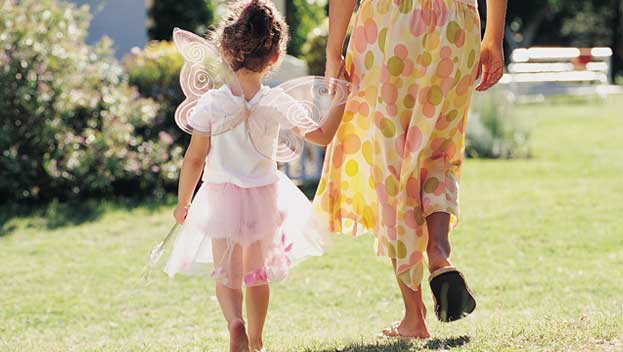If your roost is ruled by small beings less than a metre tall, author and family counsellor Karen Phillip has these tips to help swing the pendulum back in your favour.
Say ‘yes’ more often, as it is a pause word. Your child usually stops to listen to what you’ve agreed to. Try, “Yes, but not right now”.
Give your child two choices, and he will feel as though he has some control in his life. For example, believing it’s his decision to eat lunch now instead of later.
When you see the signs of an impending tantrum, warn your child about what will happen if he continues to behave poorly, such as putting him in his room with no toys, and be sure to follow through.
Model great behaviour. No yelling at a child for yelling, or smacking a child for smacking. This applies to how you treat your partner, too.
Explain the rules and boundaries of your household clearly and simply. Be specific. Rather than asking your child to tidy his room, ask him to pick up all his toys and put them in the correct containers.
For more tips on taming your rowdy brood, pick up a copy of Karen’s helpful new book, Who Runs Your House, The Kids or You? ($29.99), at www.whorunsyourhouse.com.
Understanding why children have tantrums will help you stay in control
Tantrums typically occur in children 3 and under, although some kids continue to have them when they are older. For some children angry outbursts might be there usual way of showing they aren’t happy, whereas for others a tantrum is a rare occurrence. It’s important to accept they are normal – your children aren’t adults yet and don’t yet know the tools to keep calm or see small problems for what they are.
Tantrums usually occur out of frustration – an inability to communicate a need or want properly, whether it’s a toy they want to play with or not being allowed to do a task for themselves. As adults, we can appreciate the frustration of not being heard – we are parents, after all!
How to head off a tantrum
Let young children have some control over what they do – choosing which cup they drink out of, when they brush their teeth or which book they want you to read them. Feeling they are making choices avoids frustration.
Give your child the attention they need. If they feel they are being ignored – by your phone call or your chat to your friend at the checkout – a tantrum guarantees them your attention, even if it’s something they did wrong.
If you can see a tantrum coming on, try to distract your child into another activity. Instead of letting him through his Lego out of frustration at not being able to build what he wants, suggest you move to painting.
Don’t say “No” automatically. Have a think about whether asking for a piece of fruit before lunch, just this once, might be ok. What’s the expression? Choose your battles.
Recognise the signs that might lead to a tantrum – is your child’s nap time due? Do you normally go to the park after lunch but instead you’re grocery shopping.
When the tantrum happens anyway
Don’t lose it. If you stay calm, your child might calm down quicker. The more you yell, the less he’ll feel he’s being heard.
Find the cause of the tantrums – is it frustration at not being understood, not being allowed to do something or is he simply tired? Deal with the cause, fix the problem, even if it means explaining why he isn’t allowed what he wants.
Make sure the tantrum isn’t hurting your child or others. Throwing toys, hitting his head or fists on something or someone are not allowed. If necessary, take the child to another room or quite place. You might need to hold them until they calm down. Don’t leave them alone – this is a confusing time for young children and knowing you are there will help them feel safe. Older kids can be told to stay in their room until they calm down- this also helps them feel they are in control.
Don’t give in to tantrums. You do not want your child to learn that kicking and screaming on the floor of the supermarket will get them the lollies they want.
When the tantrum is over, and your child is calm, give them a hug so they know they are still loved. But also explain there are rules and that tantrums are not rewarded, good behaviour is.


